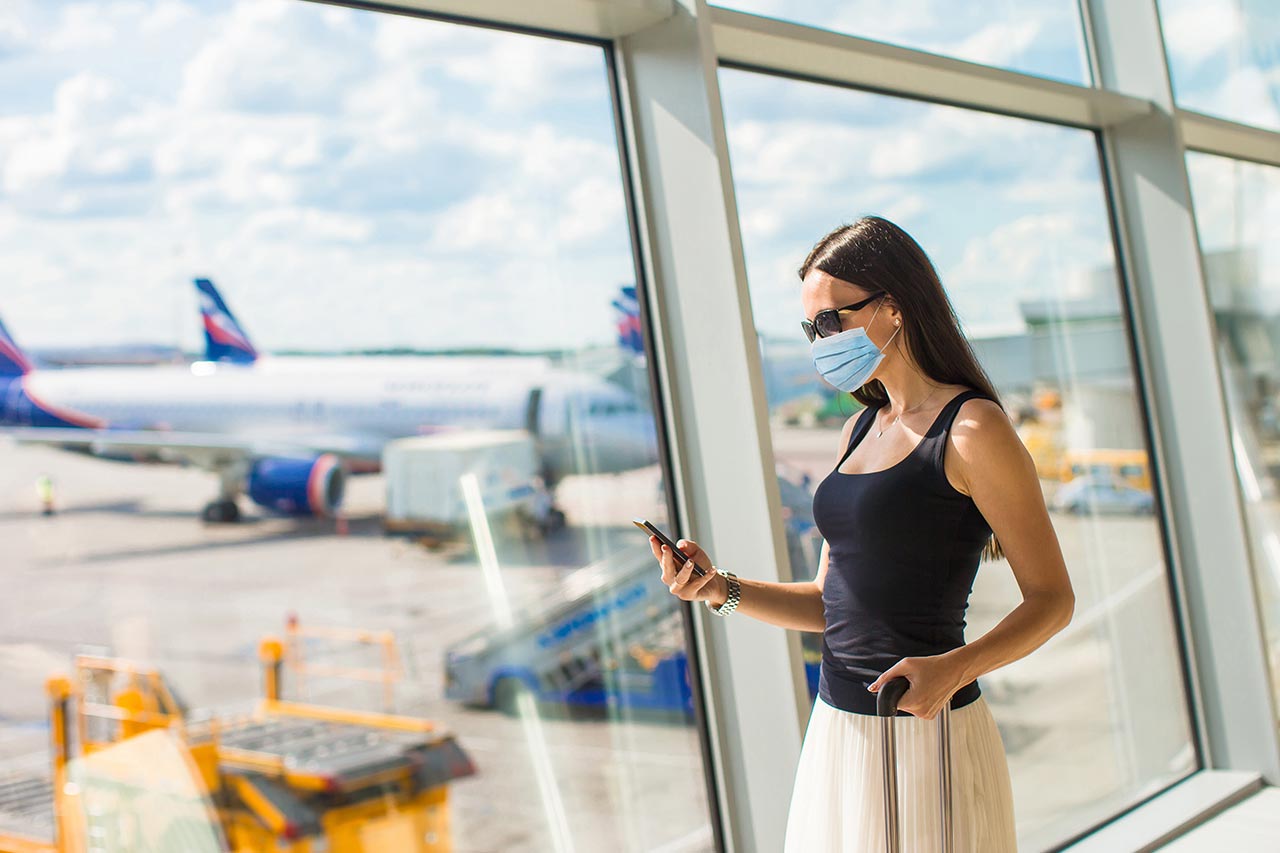Airports and COVID-19: Innovative sanitary measures to tackle COVID-19

With the COVID-19 pandemic, global air transportion systems must learn to function differently. While more and more European countries are experiencing a second lockdown, the difficult prevention of the spread of the disease is calling for drastic sanitary measures, in particular at the borders and especially at airports. While most airports are gathering around standardized measures and good practices to tackle COVID-19, an increasing number of them is choosing to go further so as to reassure passengers, in particular through innovative technical solutions.
In response to the COVID-19 pandemic, an international framework for standardizing sanitary measures has been set up for airports
COVID-19 is not the first pandemic to hit the air transport industry during the last decades, and standard procedures have been established since the 2000’s. Yet, in front of such a threat, most major airports have implemented exemplary measures to reassure both passengers and authorities:
- Disinfection
- Physical distancing
- Protection of employees
- Reorganization of the walkways and of the airport equipment
- Communication toward passengers.
For example, passenger flow separation between arrivals from high-risk countries and others is becoming a standard, Auckland airport having even radically split its international terminal in two parts. Also, the Airport Council International, with the support of the International Civil Aviation Organization (ICAO), has started an “Airport Health Accreditation Programme” this summer, which recognizes the relevance and the efficiency of the measures put in place by best-in-class airports. Istanbul Airport was the first to obtain it in early August.
Yet, this kind of label implies very heavy and costly measures which could be totally inadequate for many regional airports. It will be hence relevant to identify, amongst those many processes, the most brilliant and relevant ideas in face of the specific context of each airport, of which the traffic can be radically different in nature and in importance.
Last but not least, passenger testing is progressively becoming a standard, complementary to those measures, especially with the development of antigenic tests which allow for faster results and are to start in French airports by late October. A few airports are still lagging, such as Madrid, where it was still not possible to test arrival passengers in mid-October.
Towards new protection and testing means at airports to cope with COVID-19
In response to the COVID-19 pandemic, beyond the standardization of sanitary measures in airports, best-in-class airports will probably be the most innovative ones in terms of disinfection or testing, with the arrival of new and more efficient processes: decreasing the risk of contamination between people.
For example, the United Arab Emirates have trained canine squad to detect contaminated passengers with a claimed detection rate of 92%. The process seems all the more interesting since it does not involve direct contact between operators and passengers. It could be extended to other infrastructure of the country, such as the famous gigantic malls.
Other countries, such as Finland, have already started trials in airports. But this idea is struggling to find its way in France, even if the method has been trialled as early as May in outside airports with the Nosaïs and Covidog projects which claimed a detection rate in the range between 94% and 98%.
Betting on a different strategy, Hong Kong International Airport has turned to technology with a combination of impressive systems:
- Intelligent Sterilization Robots, which were first developed in hospitals, are autonomously disinfecting not only airports surfaces but also the ambient air with a combination of UV light, 360-degrees disinfection spray-heads and filters.
- CLeanTech is a disinfection process for employees which are working with “high-risk passengers”: after a body temperature test, a disinfectant is sprayed all over the employee for 40 seconds, eliminating about 99% of viruses and germs, all within negative pressure to avoid outside contamination.
- Antimicrobial coatings are applied on high-touch surfaces of passenger facilities.
This initiative is not the only one of its kind. Following Hong Kong, other airports have started to deploy similar means to allow their passenger to travel with some peace of mind, in particular in Northern America:
- Pittsburgh and San Antonio airports have in turn deployed Intelligent Sterilization Robots
- Los Angeles, Charlotte, Chicago, and San Francisco airports have installed UV-based or bipolar ionising disinfection systems in air conditioning
- In Toronto Airport, UV lamps are disinfecting handrails of escalators and of people movers
Beyond « hi-tech » features, we also see an increase in the use of simpler, yet efficient, solutions. While the global air transport industry could do nothing but watch the virus spread worldwide early 2020, new standards and innovative means are available today for airports. The application of such measures will obviously have to take into account the context of each airport, with its specificities in terms of traffic and business model. It will hence be the search for good practices and the adaptation of brilliant ideas stemming from elsewhere which will empower our airports with the adequate means to make air transport safer from a sanitary standpoint for their passengers.
Want to keep an eye on innovations shaking up your industry? Discover our achievements in technology scouting.
Maxence
Senior Consultant in Alcimed Chemicals-Materials & Aeronautics team in France
Do you have an exploration project?
Our explorers are ready to discuss it with you